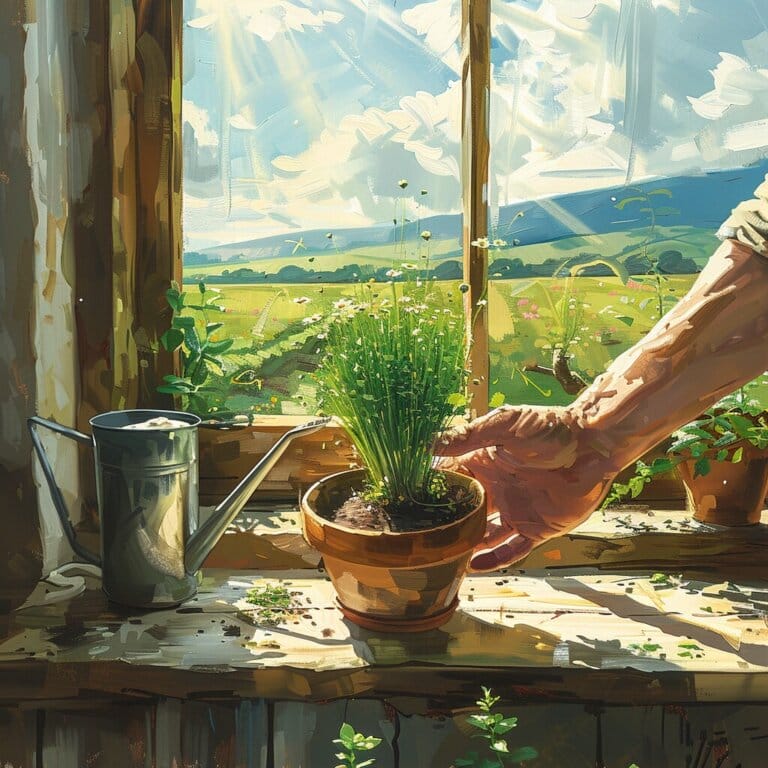Zebra Plant Brown Tips? Here’s How to Prevent and Fix the Issue
Experiencing discoloration on your zebra plant leaves? Belonging to the genus Aphelandra squarrosa, these eye-catching indoor plants favor particular conditions essential for their care. We’ve uncovered some common culprits behind this issue that might be causing concern through no fault of the dedicated gardener.
By optimizing growing requirements including appropriate lighting, temperatures, and nutrient levels homeowners can prevent leaves turning brown or promote fresh new growth.
Stay tuned to discover how a few simple tweaks either through modifying the potting mix, increasing localized humidity, or adjusting the watering schedule can make a significant difference in restoring your zebra plant’s lush variegated appearance and overall health.
Key Takeaways
- Proper watering and humidity levels prevent zebra plant brown tips.
- Avoid using tap water to prevent mineral build-up and leaf discoloration.
- Adequate air circulation reduces fungal disease risks for zebra plants.
- Adjust care routines promptly to revive yellowing leaves and maintain plant health.
Understanding the zebra plant brown tips: An Overview

Ensuring the health and longevity of zebra plants requires understanding their care needs. Striking for their striped leaves resembling a zebra’s pattern, these plants native to Brazil belong to the Acanthaceae family.
Proper zebra plant care involves providing bright, indirect sunlight along with well-draining soil that retains some moisture without becoming soggy. Overwatering can cause root rot, while underwatering leads to brown leaf tips.
Maintaining necessary humidity levels is also important, especially in dry indoor climates. Regular misting or a humidifier aids zebra plants, particularly in winter when indoor air is driest.
Monitoring leaves offers insight into a plant’s health. Brown tips may indicate issues like underwatering, low humidity, or nutrient deficiencies.
Recognizing the Signs: Brown Tips on Zebra Plant Leaves

Recognizing signs of brown tips on zebra plant leaves is important for maintaining the plant’s health and appearance. When observing your zebra plant, here are key indicators to look out for:
- Zebra Plant Leaves Turning Brown: One of the most common signs of plant distress is the browning of leaf tips. This could signify various issues affecting the plant’s overall health.
- Lower Leaves Affected: Browning starting from the lower leaves can be a critical signal of plant health problems. Monitoring the progression of browning can provide insights into the severity of the issue.
- Yellowing of Leaves Preceding Browning: Before the tips turn brown, you may notice yellowing of the leaves. This yellowing can serve as an early warning sign that the plant is under stress and corrective actions are needed.
Investigating the Causes: Why Zebra Plant Leaves Turn Brown
Investigating the Causes of Why Zebra Plant Leaves Turn Brown reveals several key factors contributing to this common issue. One significant factor is excess water, which can lead to brown leaf tips on zebra plants. When the roots are constantly saturated, they struggle to absorb oxygen, causing the leaves to turn brown.
Another important element to take into account is low humidity levels. Zebra plants thrive in environments with moderate to high humidity, so when the air is too dry, the leaves can start browning.
Additionally, the quality of water used for watering zebra plants plays a role in leaf discoloration. Tap water containing high levels of salts and chemicals can accumulate in the soil over time, resulting in yellowing and browning of leaves. Monitoring the type of water you use can help prevent this issue.
Unveiling the Solution: Preventing Zebra Plant Leaves from Turning Brown

To maintain the health and vibrancy of your zebra plant and prevent brown tips on its leaves, implementing proper watering techniques, optimizing humidity levels, and selecting the appropriate type of water are key factors to take into account.
- Proper Watering Techniques: Overwatering can lead to root rot, causing brown tips on zebra plant leaves. Make sure the soil is moist but not waterlogged by allowing the top inch to dry out before watering again.
- Maintaining Ideal Humidity Level: Zebra plants thrive in moderate to high humidity levels. To prevent brown tips, consider using a humidity tray, misting the plant regularly, or placing a small humidifier nearby.
- Choosing the Right Water: Tap Water vs. Distilled Water: Zebra plants are sensitive to chemicals found in tap water. Opt for distilled or filtered water to prevent mineral build-up in the soil, which can impact the plant’s health.
In addition to these steps, adequate air circulation around the plant can also help prevent issues with brown tips. Proper ventilation can reduce the risk of fungal diseases and ensure that the plant’s leaves can transpire effectively. By incorporating these practices into your zebra plant care routine, you can help keep your plant looking healthy and vibrant.
Can the Tips for Preventing Brown Tips on Zebra Plants also Help with Yellow Leaves on Corn Plants?
If you’re experiencing troubleshooting yellow leaves corn plants, the tips for preventing brown tips on zebra plants may also be helpful. Make sure your corn plants are not overwatered, receive proper sunlight, and are situated in well-draining soil. Additionally, check for signs of pests and disease that could be causing the yellowing.
Caring for the Affected Zebra Plant: Reviving Your Yellowing Leaves

To revive yellowing leaves, start by evaluating the plant’s environment and care routine. Check for factors like inadequate watering, excessive sunlight exposure, poor soil quality, over-fertilization, and drainage issues that could be contributing to the problem.
For zebra plant care, do this:
Have you noticed the leaves of your zebra plant (Haworthia fasciata) starting to yellow? Below are some easy steps to revive your succulent:
- Adjust Your Watering Schedule
- Check the soil moisture regularly and ensure the top inch stays moist but not soggy. Allowing the soil to dry out fully can cause yellowing.
- Improve Drainage
- Consider repotting in a well-draining potting mix suited for succulents. This prevents waterlogging around the roots which could lead to rot.
- Provide Proper Lighting
- Place your plant in bright, indirect sunlight to avoid sunburn. Direct midday sun may cause leaf tips to yellow or brown.
- Use Balanced Fertilizer Sparingly
- Avoid over-fertilizing and opt for half-strength applications during the growing season only. Excess nutrients can damage leaves.
- Inspect and Address any Root Issues
- Check roots and remove any mushy or rotted sections, addressing the cause whether overwatering or poor drainage.
- Trim Damaged Leaves
- Remove any severely yellowed leaves to redirect the plant’s energy to healthier new growth at the center.
With some small adjustments like these, you can revive your zebra plant and get those striking dark green and white variegated leaves back to their vibrant best! Let me know if you have any other questions.
Conclusion
Let’s work together to keep our zebra plants healthy and vibrant. By addressing the root causes of brown tips, adjusting our care routines, and providing the right conditions, we can prevent and fix this issue.
With a little attention and effort, our zebra plants will thrive and continue to bring beauty to our spaces.
Let’s stay proactive and committed to nurturing our plants for long-lasting success.
Frequently Asked Questions
Why are the tips of my zebra plant turning brown?
The tips of zebra plants turning brown is often caused by dry air or infrequent watering. Zebra plants require moist soil and moderate humidity levels year-round. Check the soil moisture and increase water if the top inch is dry.
What is causing brown spots on my zebra plant leaves?
Brown spots could indicate pest or disease issues like fungal or bacterial leaf spot. Isolate the plant and inspect for pests. Consider insecticidal soap or neem oil treatments if spots spread. Improving air circulation and water quality may also help prevent recurrence.
How can I prevent zebra plant leaves from turning brown?
Zebra plants prefer bright, indirect light and warmth above 60 degrees Fahrenheit. Monitor light and temperature conditions and avoid direct sunlight, which can cause leaf scorch, browning and root rot. Water regularly to keep the soil moist but not soggy. Improve humidity with a pebble tray or plant collection.
Why are the edges of my zebra plant leaves turning brown?
Browning leaf edges is often a sign of low humidity. Zebra plants require humidity levels between 50-60% to thrive. Use a humidifier, pebble tray or increase indoor planting to improve ambient humidity. Check that containers have drainage holes to prevent root rot from soggy soil conditions.
My zebra plant is turning brown, what should I do?
Brown zebra plants often results from dry air, too much sunlight, or irregular watering allowing the soil to dry out fully. Check moisture levels and sunlight exposure, then water thoroughly when the top inch is dry. If the plant continues deteriorating, it may need repotting with fresh soil or moving to a location with lower light and higher humidity. As a last resort, consider pruning away brown sections to promote new growth.







